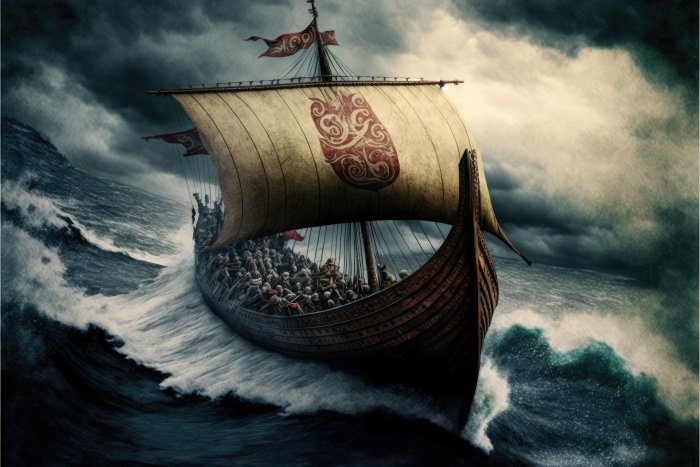Secrets Of Legendary Viking Crystal Sunstones And The Mysterious Uunartoq Artifact Unraveled
A. Sutherland - AncientPages.com - Over one thousand years ago, in open, hand-built wooden ships equipped with massive, hand-loomed sails, the Vikings navigated the extremely challenging waters of the North Atlantic.
While voyaging on the seas, how did the Vikings know where they were going?
According to sagas from the Viking era, the Vikings used whales, swells, birds, the stars, and the wind as clues to aid in navigation.
The Norse sagas mention a mysterious "sunstone" - a magical stone that showed sailors the road when the sun disappeared.
Medieval sunstone used to locate the Sun in the sky when clouds obstruct it from view. Credit: ArniEin - CC BY-SA 3.0
Now researchers say the stone is real and it's a special crystal. One of the reasons why the existence of sunstones has long been disputed is because they are contained in the saga of Saint Olaf, a tale with many magical elements.
However, this has changed, and now. Sunstones can no longer be considered just a myth.
Archaeologists have discovered a special crystal that suggests legendary Viking sunstones did exist in reality.
The crystal uncovered in the 1592 sunken Elizabethan shipwreck near the Channel Islands, between England and France, is shown to be an Iceland spar.
The research team headed by scientists at the University of Rennes says the stone was next to a pair of navigation dividers, suggesting it may have been kept with the ship's other navigational tools.
While voyaging on the seas, how did the Vikings know where they were going? Credit: Adobe Stock - Noel Cook
It is believed that Vikings used so-called sunstones as a compass to find their way in arctic waters.
Researchers suggest that sunstones could have been held up toward the center of the sky, allowing sunlight to hit them and get polarized and broken into an "ordinary" and an "extraordinary" beam.
On a clear, not cloudy day, they could have rotated the crystal until the pair of beams lined up. By noting where the sun was when this happened, navigators could make a reference point to use even when the Sun was obscured by clouds or twilight.
If the crystal is held east-west, the double image becomes a single image and thus allows a sailor to locate the Sun.
According to the study published in the journal Proceedings of the Royal Society A. "such a crystal immersed in seawater plays a crucial role by limiting the solubility, strengthening the mechanical properties of the calcite, while the sand abrasion alters the crystal by inducing roughness of its surface.
Although both phenomena have reduced the transparency of the Alderney calcite crystal, we demonstrate that Alderney-like crystals could have been used as an accurate optical sun compass to aid ancient navigation when the Sun was hidden by clouds or below the horizon.
To avoid the possibility of large magnetic errors not understood before 1600, an optical compass could have helped provide the sailors with an absolute reference. An Alderney-like crystal permits the observer to follow the azimuth of the Sun, far below the horizon," the research team writes in the science paper.
It is doubtful archaeologists will ever uncover a complete crystal in a Viking site because Vikings preferred to commit their dead to funeral pyres, cremating them and their grave goods.
Then there is the mysterious Uunartoq artifact that could shed more light on how Vikings navigated 1,000 years ago. The disc is estimated to have been about seven centimeters in diameter.
When the artifact was discovered, some dismissed it as simply a decorative object. Other scientists believe that the Uunartoq disc was used as a compass by the Vikings as they traversed the North Atlantic Ocean from Norway to Greenland.
"Vikings routinely crossed the North Atlantic without a magnetic compass and left their mark on lands as far away as Greenland, Newfoundland, and Baffin Island.
Based on an eleventh-century dial fragment artifact found at Uunartoq in Greenland, it is widely accepted that they sailed along chosen latitudes using primitive Sun compasses.
Such instruments were tested on the sea and proved to be efficient hand-held navigation tools, but the dimensions and incisions of the Uunartoq find are far from optimal in this role.
On the basis of the sagas mentioning sunstones, incompatible hypotheses were formed for Viking solar navigation procedures and primitive skylight polarimetry with dichroic or birefringent crystals," a team of Hungarian researchers wrote in their science paper.
A closer examination of the Uunaritoq artifact reveals that the disc could, in fact, have functioned as a single entity. However, it is more likely the disc was used in conjunction with other tools - including a pair of crystals and a flat, wooden slab - to help navigate when the sun was low in the sky or even below the horizon.
"When the sun is low above the horizon, even the shadow of a small item can fall off the board, and such situations are frequent in the northern seas," said study co-author Balazs Bernath
With the help of the crystal sunstones, the Vikings could locate the sun after sunset. Such crystal calcite stones produce patterns when they're exposed to the polarization of UV rays within the sunlight.
This means that when the crystals are held up to the sky, the orientation of these patterns cast within the stone can help pinpoint the sun's position below the horizon. Once the Vikings had determined the position of the hidden sun, they could have used a specially designed wooden slab called a shadow stick to simulate the gnomon's shadow based on the angle at which the hidden sun would hit it. The location of the outer edge of that imaginary shadow could then have been used to determine their cardinal direction.
The discovery of the crystal sunstone and the Uunartoq artifact provides us with valuable knowledge of how the Vikings could navigate long distances so many years ago.
The Norse saga tells:
"The weather was very cloudy. It was snowing. Holy Olaf the king sent out somebody to look around, but there was no clear point in the sky. Then he asked Sigurd to tell him where the sun was. After Sigurd complied, he grabbed a sunstone, looked at the sky and saw from where the light came, from which he guessed the position of the invisible sun. It turned out that Sigurd was right."
For a long time, this intriguing story baffled historians. Today, we know the mythical Viking sunstone was a polarizing crystal that was most likely used by the Vikings to successfully navigate across the North Atlantic to the New World.
Updated on January 14, 2024
Written by: A. Sutherland - AncientPages.com Senior Staff Writer
Copyright © AncientPages.com. All rights reserved. This material may not be published, broadcast, rewritten or redistributed in whole or part without the express written permission of AncientPages.com
More From Ancient Pages
-
 Why Did First Printed Books Scare Ancient Scholars In Europe?
Ancient History Facts | Sep 18, 2021
Why Did First Printed Books Scare Ancient Scholars In Europe?
Ancient History Facts | Sep 18, 2021 -
 Peculiar Ancient Ruins That Can Re-Write History Of Florida Found By Archaeologists
Featured Stories | Jul 28, 2024
Peculiar Ancient Ruins That Can Re-Write History Of Florida Found By Archaeologists
Featured Stories | Jul 28, 2024 -
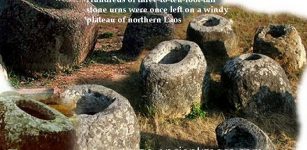 Mysterious Jars In Laos – Long-Lasting Mystery Is Still Unsolved
Archaeology | May 20, 2019
Mysterious Jars In Laos – Long-Lasting Mystery Is Still Unsolved
Archaeology | May 20, 2019 -
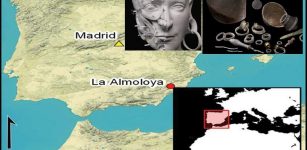 Disappearance Of The El Argar Civilization – Why Has No One Lived In The La Almoloya Region Again?
Civilizations | May 10, 2022
Disappearance Of The El Argar Civilization – Why Has No One Lived In The La Almoloya Region Again?
Civilizations | May 10, 2022 -
 Prehistoric ‘Cinema’ – Unique Karelian Rock Carvings With Special Light Effects
Featured Stories | Jul 14, 2014
Prehistoric ‘Cinema’ – Unique Karelian Rock Carvings With Special Light Effects
Featured Stories | Jul 14, 2014 -
 Something Unexplained Is Happening In Ancient English Caves – Reports From Numerous People
Featured Stories | Oct 22, 2024
Something Unexplained Is Happening In Ancient English Caves – Reports From Numerous People
Featured Stories | Oct 22, 2024 -
 Strange Ancient Structures In The Northeastern U.S. Were Built By Unknown People With Shining Shields, Native Americans Say – Evidence Of Norsemen Or Celts?
Featured Stories | Apr 8, 2025
Strange Ancient Structures In The Northeastern U.S. Were Built By Unknown People With Shining Shields, Native Americans Say – Evidence Of Norsemen Or Celts?
Featured Stories | Apr 8, 2025 -
 Glass Technology Was Known In Sahara Centuries Before The Arrival Of Europeans
Ancient Technology | Jan 20, 2018
Glass Technology Was Known In Sahara Centuries Before The Arrival Of Europeans
Ancient Technology | Jan 20, 2018 -
 Mystery Of The Medieval ‘Out Of Time’ Village In England
Featured Stories | Mar 21, 2024
Mystery Of The Medieval ‘Out Of Time’ Village In England
Featured Stories | Mar 21, 2024 -
 Surprising Connection Between Norse God Odin And Attila The Hun Revealed
Featured Stories | Dec 8, 2020
Surprising Connection Between Norse God Odin And Attila The Hun Revealed
Featured Stories | Dec 8, 2020 -
 Why Are Apples So Important During Halloween?
Ancient History Facts | Oct 30, 2024
Why Are Apples So Important During Halloween?
Ancient History Facts | Oct 30, 2024 -
 Mysterious Osirion Of Abydos Egypt – Was It An Ancient Energy Plant?
Featured Stories | Feb 26, 2020
Mysterious Osirion Of Abydos Egypt – Was It An Ancient Energy Plant?
Featured Stories | Feb 26, 2020 -
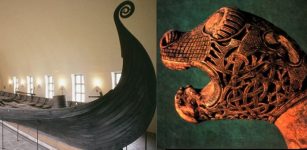 Oseberg Ship: Amazingly Well-Preserved Viking Burial Ship
Featured Stories | Jun 15, 2016
Oseberg Ship: Amazingly Well-Preserved Viking Burial Ship
Featured Stories | Jun 15, 2016 -
 Unsolved Enigma Of The Lost Ancient City In The Kalahari Desert
Ancient Mysteries | Aug 29, 2015
Unsolved Enigma Of The Lost Ancient City In The Kalahari Desert
Ancient Mysteries | Aug 29, 2015 -
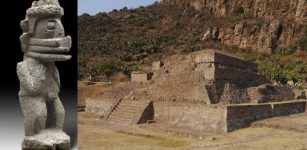 Who Built The Mysterious Huapalcalco Pyramid – Mexico’s Smallest Pyramid?
Featured Stories | Mar 29, 2018
Who Built The Mysterious Huapalcalco Pyramid – Mexico’s Smallest Pyramid?
Featured Stories | Mar 29, 2018 -
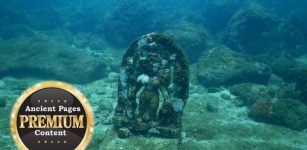 Mystery Of The Lost Continent Destroyed By An Ancient Cataclysm – Mysterious Islands – Part 2
Ancient Mysteries | Aug 16, 2021
Mystery Of The Lost Continent Destroyed By An Ancient Cataclysm – Mysterious Islands – Part 2
Ancient Mysteries | Aug 16, 2021 -
 Exploring Future Evolution: How Will Humans Change In The Next 10,000 Years?
Featured Stories | Oct 3, 2022
Exploring Future Evolution: How Will Humans Change In The Next 10,000 Years?
Featured Stories | Oct 3, 2022 -
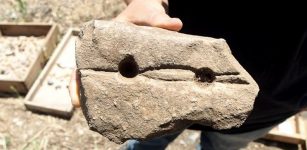 Stone Slab c. 9,000-Year-Old Used In Making Fire Discovered Not Far From Jerusalem, Israel
Archaeology | May 17, 2017
Stone Slab c. 9,000-Year-Old Used In Making Fire Discovered Not Far From Jerusalem, Israel
Archaeology | May 17, 2017 -
 Seven Gods Of Happiness – Bring Luck, Prosperity And Health In Japanese Folk Belief
Featured Stories | Jun 29, 2020
Seven Gods Of Happiness – Bring Luck, Prosperity And Health In Japanese Folk Belief
Featured Stories | Jun 29, 2020 -
 Archaeological Evidence That Has Been Suppressed In The Name Of ‘Scientific Conformity’
Featured Stories | Sep 4, 2014
Archaeological Evidence That Has Been Suppressed In The Name Of ‘Scientific Conformity’
Featured Stories | Sep 4, 2014


